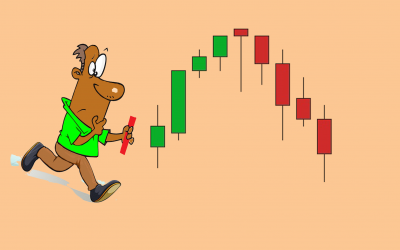Pivot points are levels at which the market direction changes. The pivot points are leading indicators on the market charts.
In other wards, when you use pivot points, you can see what is about to happen in the market before it actually happens. They show the distribution of strength between the buyers and sellers in the market.
You can also use pivot points to identify the areas of support and resistance on the market chart.
The Pivot Point Indicator
Pivots Points are mainly technical analysis indicators traders use to determine support and resistance levels. It comprises of seven levels. Simply they are support and resistance levels.
These levels are calculated basing on the high, low, and close of the previous trading session.
The key pivot point is between the three resistance and support levels above and below the Pivot Point.
Key Pivot Level (PP) – This is the middle and key pivot point on the chart.
Above PP, Resistance 1 (R1) – It is the first pivot level above the key pivot level.
The Resistance 2 (R2) – This is the second pivot level above the key pivot point, and the first above R1.
Resistance 3 (R3) – This is the third pivot level above the key pivot point, and the first above R2
Below PP, Support 1 (S1) – It is the first pivot level below the key pivot point.
The Support 2 (S2) – This is the second pivot level below the key pivot point and the first below S1.
Support 3 (S3) – This is the third pivot level below the key pivot, and the firs below S2.
At the end of this session, you will know how these levels are calculated and how to trade with pivot point indicator.
Like we previously saw, support and resistance are price reversal point most of the time. However, price can still break these levels at some point. This simply means you can use pivot points to identify potential signals for market reversals and breakout confirmations.
How do you trade Pivot points
Unlike some of the other indicators, pivot points are found to be objective .
You simply watch it form on the market chart as price moves. Then use the support and resistance lines to join the pivot points and wait for a reversal or a breakout.
As prices move in a zigzag up and down, it forms hills and valleys formations. The top parts and the bottoms form pivots. These work the same way as support and resistance on the chart.
The more times price touches a pivot level and reverses, the stronger the level is.
Also, Pivot points are strong when on a big time frame compared to small time frames. Therefore most Daily traders use previous weeks or months price pivots to identify future strong supports and and resistance.
If traders believe that a support or resistance level is very strong, they will place their stop and limit orders near preparing for reversals. This is simpler than you thought. So; how do you place your trades using pivot points!
- In an uptrend, SELL the pair below the resistance and place a stop just above the resistance.
- In a downtrend, if the price is nearing a support level, BUY the pair and put your stop just below the support level.
Let’s now take a quick look at different types of pivot points
The types of pivot points.
- Classic or standard pivot points
- Camarilla pivot points
- Woodie’s pivot points
- Fibonacci pivot points
We shall look at these in detail in the next session
In summary
- First, Pivot points are levels at which the market direction changes. They behave the same way as support and resistance levels. This means you can trade the as normal support and resistance levels.
- Sell below resistance and Buy above the support.
- Second, you can also use the pivot points to set stops and targets. In addition, you can rely on pivot points to determine the current direction of a trend.
- The more times price tests the level, the stronger it becomes. This is more valid on a higher time frame than the lower time frame.
- Last but not least, like support and resistance levels, prices may not hold all the time on pivots. At the resistance, price may break through and so does at the support level
Avaricious Life of a Newbie Trader.
Life of a Newbie Trader in Forex is super Interesting. With a lot of eager to make money, you never want to miss out on any chance. When you read about Forex trading, everything is simple. You may even start to think that your friends may not recognize you after...
- Oh, bother! No topics were found here.



